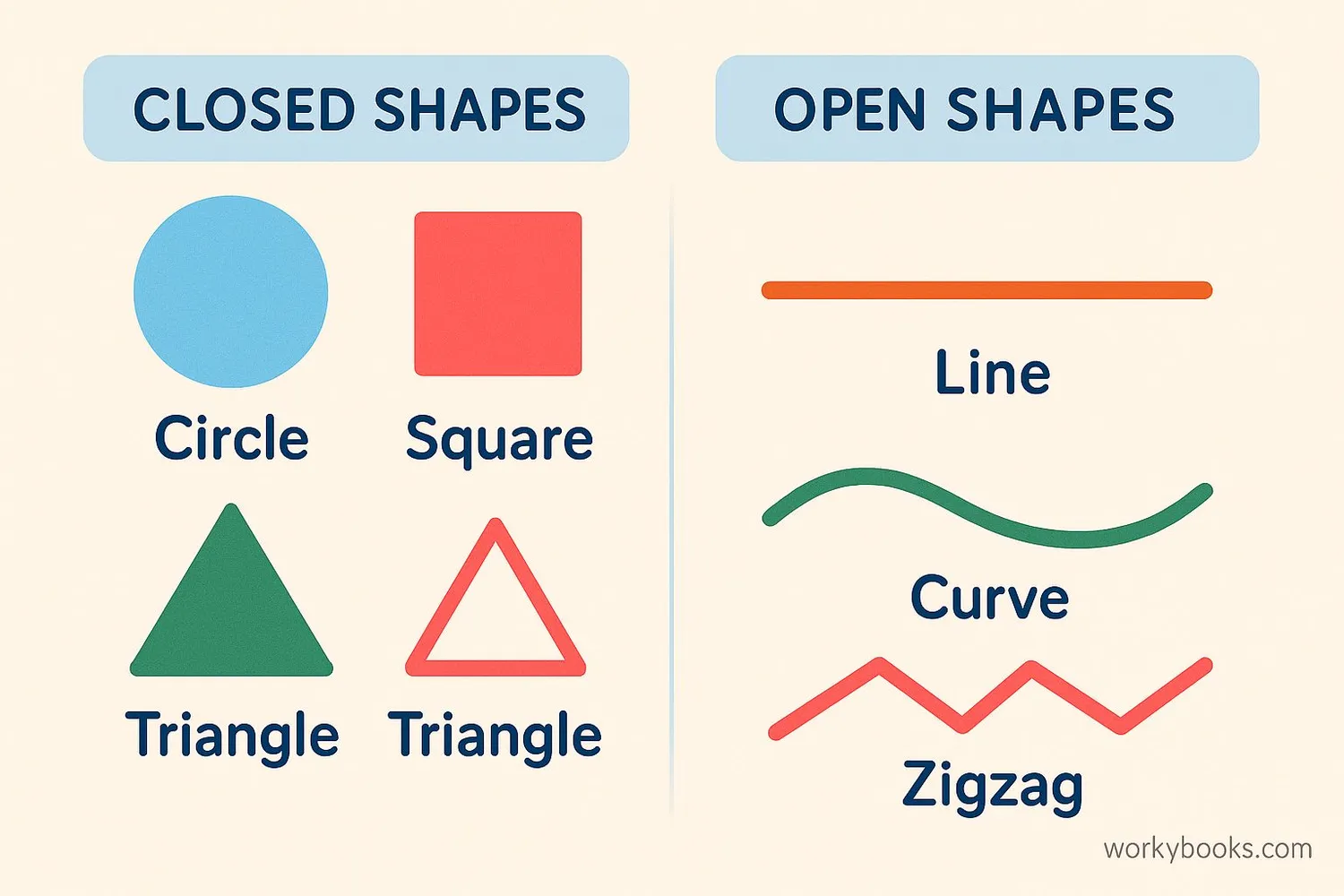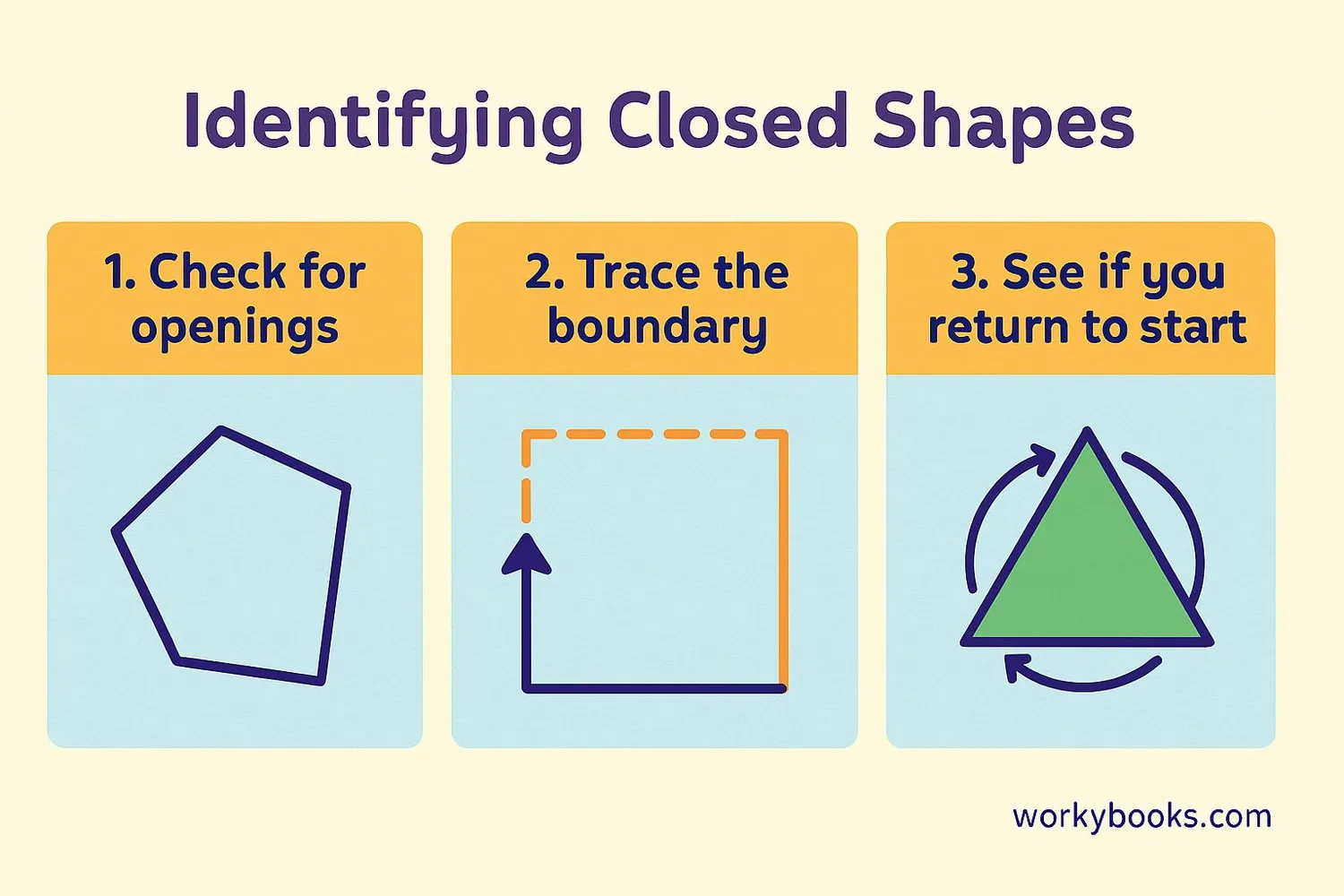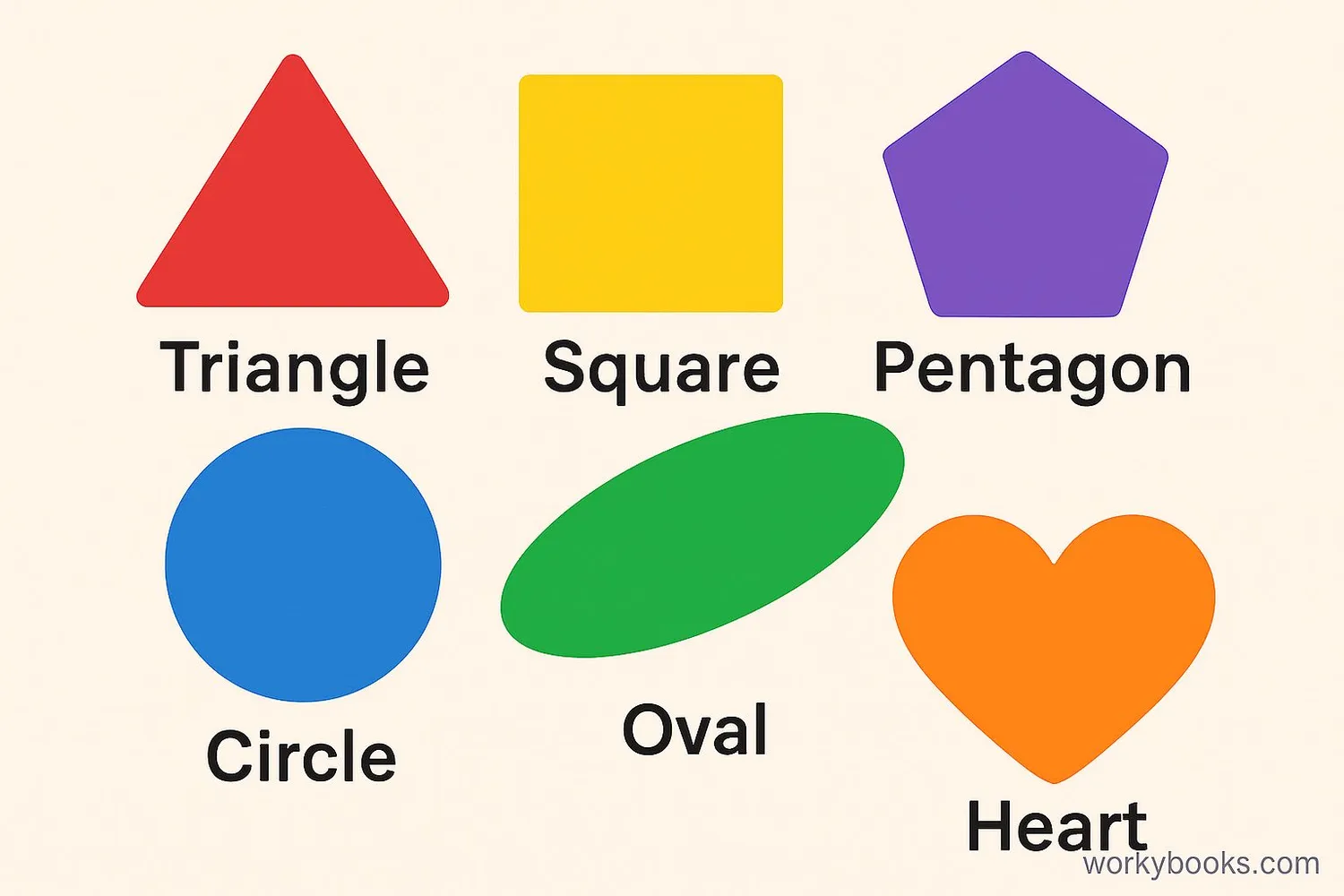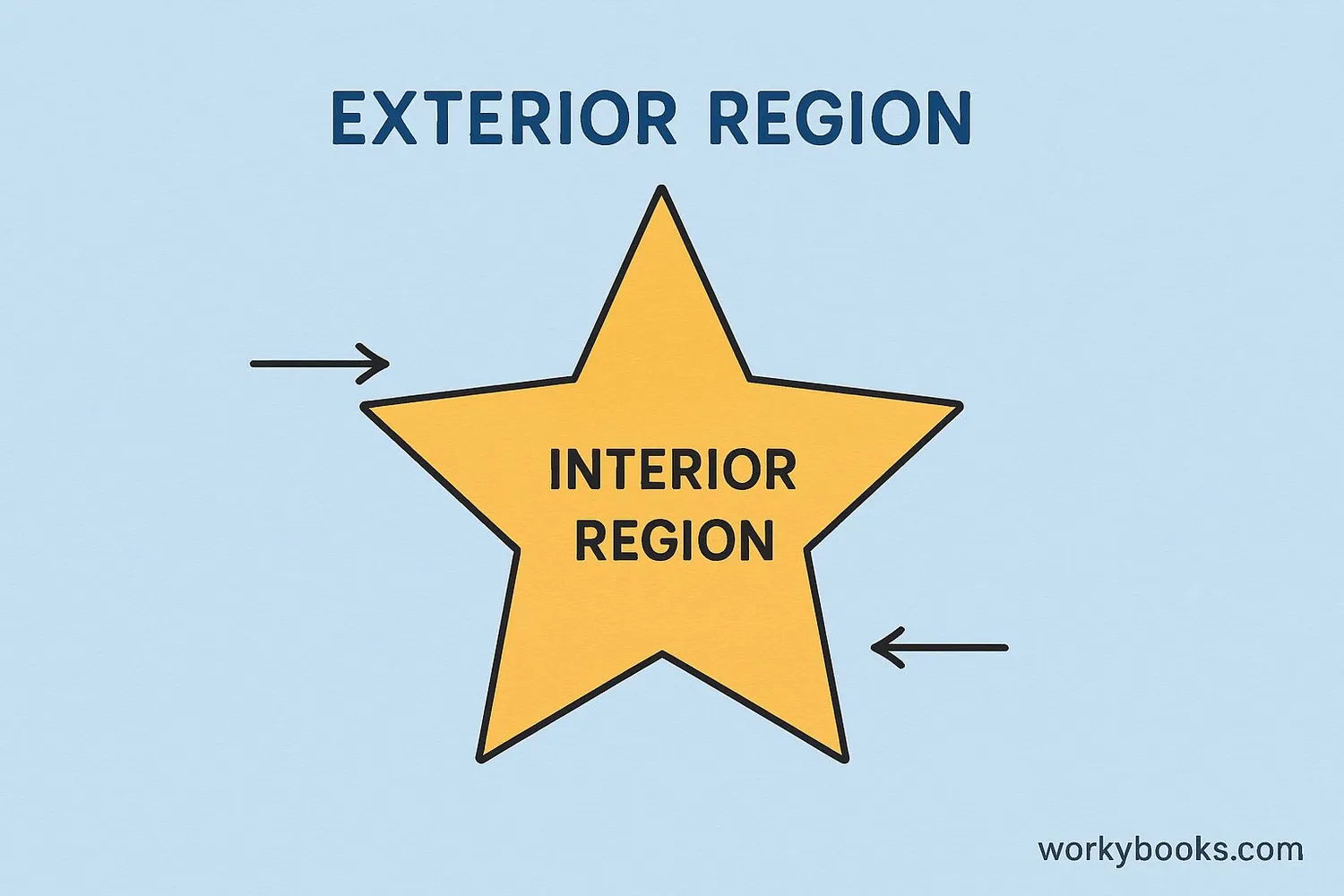Closed Shapes - Definition, Examples, Quiz, FAQ, Trivia
Learn about closed shapes with simple explanations, visual examples, and interactive activities
What are Closed Shapes?

A closed shape is a geometric figure that starts and ends at the same point, forming a continuous boundary without any breaks. It encloses an area and has both an inside and an outside.
Think of a closed shape like a fence around a yard - it creates a complete boundary. If you trace a closed shape with your finger, you'll end up exactly where you started without lifting your finger.
Key features of closed shapes:
- No openings or breaks in the boundary
- Continuous path that connects back to the start
- Has an interior region (inside) and exterior region (outside)
Key Concept
A closed shape forms a complete loop with no openings. It has an inside and outside area.
How to Identify Closed Shapes

Identifying closed shapes is easy when you know what to look for. Here's how:
Step 1: Look for openings or breaks in the shape's boundary. If there are any gaps, it's not closed.
Step 2: Mentally trace the shape's boundary. If you can go all the way around and return to your starting point without lifting your finger, it's closed.
Step 3: Check if the shape has an inside and outside area. If you can clearly define what's inside the shape and what's outside, it's closed.
Examples of closed shapes: Circles, triangles, squares, rectangles, pentagons, hexagons, ovals
Examples of open shapes: Straight lines, zigzag lines, curves with open ends, the letter "C"
Remember
Closed shapes are like a completed circle - they have no openings. Open shapes have at least one opening.
Examples of Closed Shapes

Closed shapes come in many forms. Some have straight sides (polygons), while others have curved sides. Here are common examples:
Triangle
3 straight sides
Square
4 equal sides
Pentagon
5 straight sides
Hexagon
6 straight sides
Circle
Perfectly round
Oval
Elongated circle
Everyday examples of closed shapes:
- A window (rectangle)
- A stop sign (octagon)
- A pizza slice (triangle)
- A coin (circle)
- A soccer ball (pentagons and hexagons)
Did You Know?
The simplest closed shape is a triangle - it only needs three sides to enclose an area!
Properties of Closed Shapes

All closed shapes share these important properties:
1. Continuous Boundary: The outline of a closed shape has no breaks or openings. It forms a complete loop.
2. Interior and Exterior: Every closed shape has an inside area (interior) and an outside area (exterior).
3. Simple vs Complex: Simple closed shapes don't cross themselves (like a circle or square), while complex ones might cross themselves (like a star).
4. Vertices and Sides: Polygons (closed shapes with straight sides) have corners called vertices and line segments called sides.
5. Curved Edges: Some closed shapes have curved boundaries instead of straight sides, like circles and ovals.
Important Note
Closed shapes can have any number of sides - from three sides (triangle) to thousands of sides (like a circle)!
Closed Shapes Practice Quiz
Test your knowledge about closed shapes with this 5-question quiz. Choose the correct answer for each question.
Frequently Asked Questions
Here are answers to common questions about closed shapes:
Shape Trivia
Discover interesting facts about shapes and geometry:
Ancient Geometry
The ancient Egyptians used geometry over 4,000 years ago to measure land after Nile River floods. They developed early concepts of shapes to redefine property boundaries.
Shapes in Nature
Honeybees build honeycombs in hexagonal shapes because this pattern uses the least amount of wax while storing the most honey. It's nature's most efficient shape!
Strongest Shape
The triangle is the strongest geometric shape. That's why you see triangles in bridges, roof trusses, and towers. Triangles distribute weight evenly and don't bend easily.
Infinite Sides
A circle can be thought of as a polygon with an infinite number of sides! As you add more sides to a polygon, it gets closer and closer to becoming a perfect circle.





